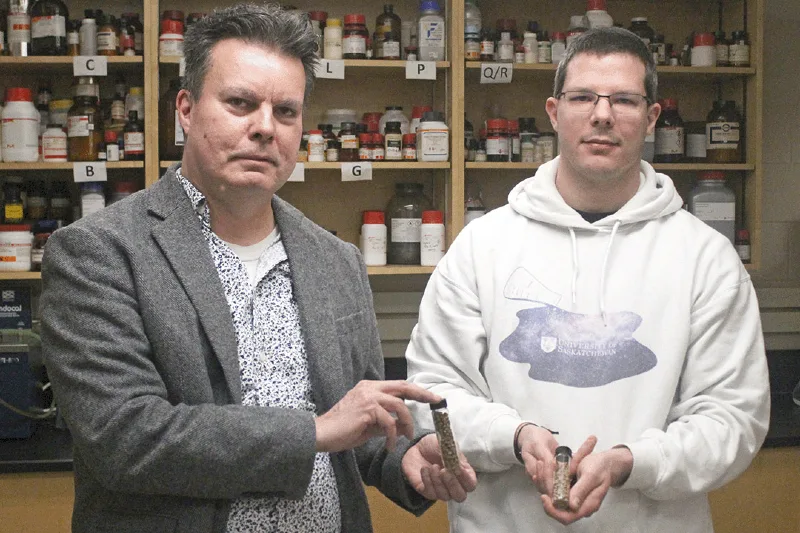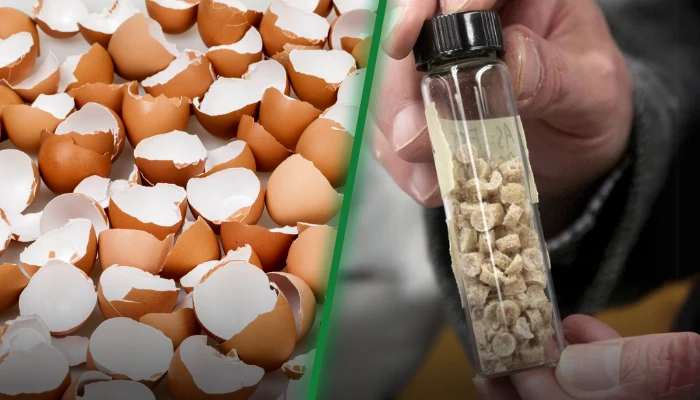Sustainability Through A ‘Closed Loop’ Solution
Imagine a world where the plastics we use not only degrade naturally, but also nourish our farms. At the University of Saskatchewan (USask), a visionary chemistry professor, Dr. Lee Wilson, and his team are turning this dream into a reality with their innovative bioplastic pellets, designed to tackle one of the planet’s most pressing environmental issues.
A Breakthrough in Bioplastic Technology
Published in the prestigious Royal Society of Chemistry Sustainability Journal, the recent study details a remarkable development in bioplastics. Dr. Wilson’s team, including PhD candidate Bernd G. K. Steiger, BSc student Nam Bui, and postdoctoral fellow trainee Bolanle M. Babalola, has engineered a bioplastic that not only resembles traditional plastic in utility but also plays a crucial role in environmental conservation.
“We’ve made a bioplastic material that functions as an absorbent, and it takes phosphate out of water, where elevated levels of phosphate in surface water is a huge global water security issue,” Dr. Wilson explained. He further detailed the process: “You can harvest those pellets and distribute them as an agricultural fertilizer.”
From Waste to Resource: The Composition of a Sustainable Future
The bioplastic pellet, a blend of marine polysaccharide (chitosan), eggshells, and wheat straw, epitomizes the concept of a ‘closed loop’—a sustainable cycle where materials are reused and recycled continuously. This bioplastic not only absorbs phosphate from water, enriching it as a fertilizer, but also addresses the critical issue of phosphate overuse in agriculture.
Phosphate, a vital nutrient for agriculture, is currently mined, leading to ecological disturbances and resource depletion. Dr. Wilson’s bioplastic offers an alternative by utilizing phosphate already present in water bodies, thereby preventing the eutrophication that leads to hazardous algae blooms.

Challenging Plastic’s Reign
Traditional plastics, such as those used in water bottles and packaging, contain harmful additives that persist in the environment, breaking down into microplastics. These tiny particles infiltrate ecosystems, contaminating water sources, and entering the food chain. Dr. Wilson emphasized the dangers of these materials as they degrade: “When these (plastics) break down in the environment, they will actually form microplastics… They have plasticizers in them and other chemicals that can contaminate water.”
Bioplastics: A Beacon of Eco-friendly Innovation
The USask bioplastic represents a significant shift towards sustainable materials that not only function like conventional plastics but also integrate seamlessly into natural ecological processes. “With bioplastics, you can avoid all of that, and you basically get something that breaks down into its original components or can be more readily composted or degraded through natural processes,” Dr. Wilson stated, highlighting the environmental benefits.
Moreover, if the production of plastics incorporated a higher ratio of bioplastics, it could dramatically reduce the environmental footprint of these materials, facilitating quicker decomposition and lesser ecological impact.
Dr. Wilson concluded with a powerful call to global leaders and communities to harness available technologies for environmental preservation. “One of the issues with microplastics is there’s a lot of technology available to remove plastic from the ocean, but it’s the willingness and the political will (preventing it) but the science and technology is already there.”
More To Discover
- Conventional Wind Energy: A Design Deadly for Birds And Why They Are Paying For Our Greenwashed Ideals
- Sustainable Furniture Foam of the Future Creates Seaweed-Filled Sofas
- Sustainable or Not? The Controversy Over Gear Used in MSC-Certified Tuna Fishing
- The Blooming Decay Stool Blossoms Into Wildflowers as It Decomposes
This approach solidifies USask commitment to sustainability research as the university shifts its resources to take on the global fight against pollution and environmental degradation. With these bioplastic pellets, we step closer to a future where technology and nature coexist in harmony.



















